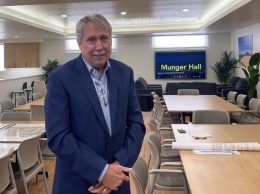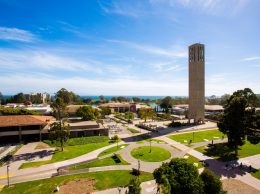UCSB ramps up cybersecurity measures
IN THIS ARTICLE
- Higher Education Topic
- Staff Report Author
By Staff Report Friday, September 16th, 2016
Like many of the region’s institutions and companies, UC Santa Barbara has scaled up its cybersecurity measures to better protect the university’s information systems.
The university has taken out a $5 million cybersecurity insurance policy, among other measures, said Matthew Hall, the associate vice chancellor for information technology and chief information officer. It has regulator penetration tests, or pen tests, and consultants who look for security vulnerabilities as well as mandatory training for UCSB staff to familiarize them with common attacks and prevention strategies.
Yet, much of its cybersecurity measures were set in place following attacks, he said.
“Most of this happened after the horse has left the barn,” Hall, the former CIO at the Tennessee Bureau of Investigation, said at the UCSB Economic Forecast Project event on Sept. 15. “Now we use pen tests and consultants, but there are basic practices we should have in place that we don’t.”
UCSB has been experiencing an uptick in phishing emails through its student Umail accounts, which disguise scams through fraudulent “official” emails that include links or attachments that capture sensitive information across vast databases.
The university has the backing of nearly 400 people in its IT department, which can respond quickly to security threats, Hall said, but many small businesses do not have that luxury.
He was followed by Jay Freeman, a technology consultant and renowned hacker who teaches classes at UCSB’s College of Creative Studies. He discussed some of the common malware like the Heartbleed bug, which allows anyone on the Internet to analyze the memory of systems protected by vulnerable versions of the OpenSSL software, or the platforms often used by banks and other financial institutions.
“We’re essentially running into a war of computation,” Freeman said.
Peter Rupert, the director of the Economic Forecast Project, capped off the discussion with an overview of the U.S. economy.
Prior to the Great Recession, GDP has grown at an average rate of 2.5 percent. But it has fallen off that trend since the downturn, Rupert said. It’s the weakest recovery over the past 50-plus years, he said.
Income inequality has been increasing in every part of the wage distribution — from the CEOs down to lower-wage workers.
But nearly all of that inequality is due to differences between different companies, not within each firm, Rupert said. The successful firms are paying more and growing while smaller companies are paying less and contracting, he said.
Rupert does not expect the Federal Reserve to raise rates as inflation continues to lag.
“The Fed has said for a long time that the target is 2 percent and we haven’t hit that for a long time and aren’t getting close,” he said.
Euro banks are in a lot of trouble in the aftermath of the Brexit and oil prices remain low, which produce some headwinds in the global economy. But U.S. median household income experienced the largest yearly rise in decades in 2015, soaring 5.2 percent last year.
• Contact Alex Kacik at [email protected].











